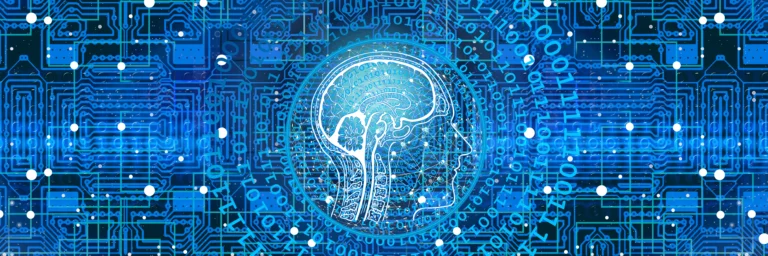The Intersection of IoT and AI – Outstanding Future
The intersection of IoT and AI is a rapidly growing field with the potential to revolutionize a wide range of industries. From manufacturing and transportation to healthcare and agriculture, the integration of artificial intelligence (AI) technologies and techniques into the Internet of Things (IoT) devices and systems is enabling the creation of intelligent systems that can analyze and interpret data in real-time, make decisions, and perform tasks without human intervention. In this post, we’ll explore the various ways in which IoT and AI are intersecting and discuss the potential benefits and challenges of this intersection for businesses and consumers.
Introduction
The Internet of Things (IoT) refers to the interconnected network of physical devices, vehicles, buildings, and other objects that are embedded with sensors, software, and network connectivity, allowing them to collect and exchange data. Artificial intelligence (AI), on the other hand, refers to the ability of machines to imitate human-like cognition, such as learning and problem-solving. The intersection of IoT and AI involves the integration of AI technologies and techniques into IoT devices and systems, enabling them to analyze and interpret data and make decisions without human intervention.

The potential impact of the intersection of IoT and AI on various industries is vast. In manufacturing, for instance, AI can be used to analyze data collected by IoT sensors to enable predictive maintenance, reducing downtime and improving efficiency. In the transportation industry, the combination of IoT and AI can be used to optimize routes and improve the safety and efficiency of self-driving vehicles. In healthcare, the intersection of IoT and AI can be used to monitor patient vital signs remotely and alert healthcare professionals of any concerning changes. The list goes on, with the potential for the intersection of IoT and AI to transform industries such as agriculture, energy, and retail as well.
In this post, we’ll delve into the various ways in which IoT and AI are intersecting and discuss the potential benefits and challenges of this intersection for businesses and consumers. By understanding the intersection of IoT and AI, we can begin to uncover the many possibilities for its use and how it will shape the future of various industries.
The Intersection of IoT and AI – Discussion!
AI and IoT: A Powerful Integration
There are many ways in which AI is being integrated into IoT devices and systems to enable advanced capabilities and decision-making. Here are a few examples:
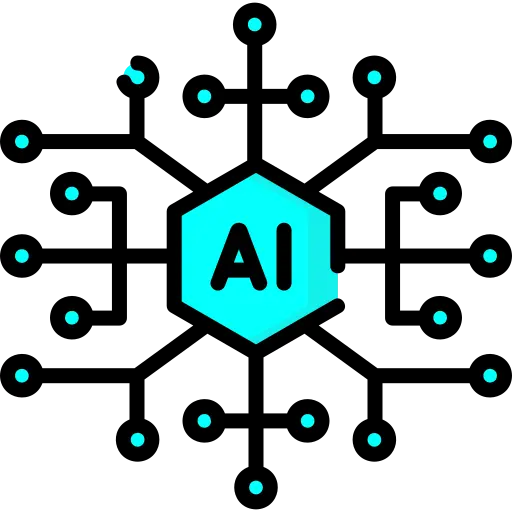
- Predictive maintenance: IoT sensors can be used to collect data on the performance and condition of equipment, which can then be analyzed by machine learning algorithms to predict when maintenance will be required. This can help prevent equipment failure and downtime, improving efficiency and productivity.
- Smart home appliances: IoT-connected appliances such as thermostats, lighting systems, and security cameras can be integrated with AI to optimize their performance and provide personalized experiences for users. For example, a smart thermostat can learn a user’s preferred temperature settings and adjust accordingly, or a smart lighting system can turn off lights when no one is in the room to save energy.
- Supply chain optimization: IoT sensors can be used to track the movement and condition of goods throughout the supply chain, and AI can be used to analyze this data to optimize routes, reduce waste, and improve efficiency.
- Predictive analytics: IoT devices can collect a vast amount of data on various aspects of a business, such as a customer behavior and equipment performance. AI algorithms can be used to analyze this data to make predictions about future trends and potential issues, allowing businesses to take proactive actions.
These are just a few examples of how AI is being integrated into IoT devices and systems to enable advanced capabilities and decision-making. As the intersection of IoT and AI continues to evolve, it’s likely that we will see many more innovative uses of these technologies in the future.”
IoT and AI: Transforming Industries
The intersection of IoT and AI has the potential to drive innovation and improve efficiencies in a wide range of industries and applications. Here are a few use cases for the intersection of IoT and AI:

- Predictive maintenance in manufacturing: IoT sensors can be used to collect data on the performance and condition of equipment, which can then be analyzed by machine learning algorithms to predict when maintenance will be required. This can help prevent equipment failure and downtime, improving efficiency and productivity.
- Optimization of connected appliances in a smart home: IoT-connected appliances such as thermostats, lighting systems, and security cameras can be integrated with AI to optimize their performance and provide personalized experiences for users. For example, a smart thermostat can learn a user’s preferred temperature settings and adjust accordingly, or a smart lighting system can turn off lights when no one is in the room to save energy.
- Supply chain optimization: IoT sensors can be used to track the movement and condition of goods throughout the supply chain, and AI can be used to analyze this data to optimize routes, reduce waste, and improve efficiency.
- Predictive analytics: IoT devices can collect a vast amount of data on various aspects of a business, such as a customer behavior and equipment performance. AI algorithms can be used to analyze this data to make predictions about future trends and potential issues, allowing businesses to take proactive actions.
These are just a few examples of the many use cases for the intersection of IoT and AI. As technology continues to advance, it’s likely that we will see more innovative applications of these technologies in the future.
AI and IoT: Unlocking Benefits
The integration of AI into IoT devices and systems has the potential to bring numerous benefits, such as real-time data analysis and decision-making capabilities. Here are a few specific benefits of using AI in conjunction with IoT:
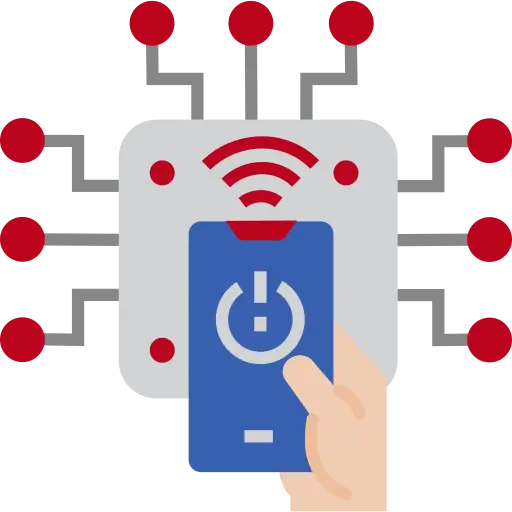
- Real-time data analysis: IoT devices can generate a large volume of data in real-time, and AI algorithms can be used to analyze this data as it is being collected. This allows for the creation of intelligent systems that can react to changing conditions and environments in real-time, rather than relying on pre-programmed rules or human intervention.
- Decision-making capabilities: By integrating AI into IoT devices and systems, it’s possible to enable them to make decisions without human intervention. This can be particularly useful in scenarios where rapid decision-making is required, such as in manufacturing or transportation.
- Improved efficiency and productivity: The use of AI in conjunction with IoT can help improve efficiency and productivity by automating tasks and enabling intelligent decision-making. For example, AI-powered IoT systems can optimize routes and schedules, reducing waste and increasing productivity.
- Enhanced customer experiences: The integration of AI into IoT devices and systems can also enhance customer experiences by providing personalized and interactive experiences. For example, a smart home assistant powered by AI can learn a user’s preferences and adjust the home’s temperature and lighting accordingly.
In summary, the benefits of using AI in conjunction with IoT are numerous, with the potential to drive innovation and improve efficiencies in a wide range of industries and applications.”
IoT and AI: Driving Industry Change
The intersection of IoT and AI has the potential to revolutionize a wide range of industries and applications. Here are a few examples of industries and applications that are being impacted by the fusion of IoT and AI:
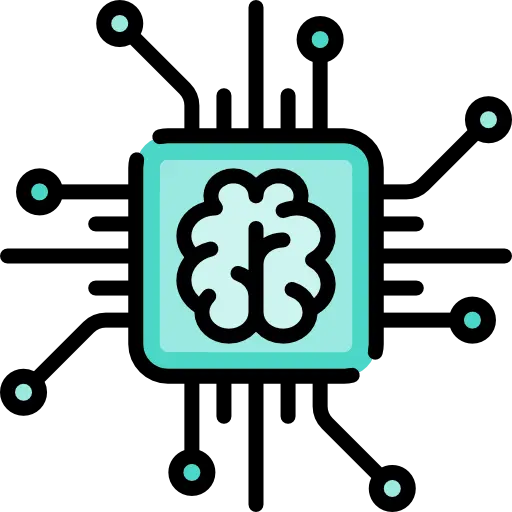
- Manufacturing: The integration of AI into IoT devices and systems in manufacturing can enable predictive maintenance, improving efficiency and reducing downtime. AI can also be used to optimize production schedules and improve the quality of products.
- Transportation: The intersection of IoT and AI has the potential to revolutionize transportation, from optimizing routes and schedules to enabling the development of self-driving vehicles. AI can be used to analyze data collected by IoT sensors to improve safety, reduce fuel consumption, and increase efficiency.
- Healthcare: The integration of AI into IoT devices and systems in healthcare can enable remote monitoring of patient vital signs, improving patient care and reducing the burden on healthcare professionals. AI can also be used to analyze medical data to identify trends and potential issues, enabling early intervention and improving patient outcomes. You can further read our post regarding Healthcare, click here.
- Agriculture: The intersection of IoT and AI can be used to optimize the management of crops and livestock, improving yields and reducing waste. AI can be used to analyze data collected by IoT sensors to optimize irrigation, fertilization, and pest control practices.
These are just a few examples of the many industries and applications that are being impacted by the fusion of IoT and AI. As technology continues to evolve, it’s likely that we will see even more innovative uses of these technologies in the future.
IoT and AI: What’s Next?
As the intersection of IoT and AI continues to evolve, it’s likely that we will see many new developments and advancements in technology. Some potential future developments and advancements in the intersection of IoT and AI include:

- Increased integration of AI into edge devices: Currently, many AI algorithms are run in the cloud, requiring data to be transmitted back and forth. In the future, it’s likely that we will see more AI algorithms being run on edge devices, such as sensors and gateways, allowing for faster decision-making and reduced latency.
- Development of more advanced AI algorithms: As AI algorithms become more sophisticated, we will likely see the development of new techniques and approaches, such as reinforcement learning, that can enable more advanced decision-making capabilities.
- Increased interoperability between IoT devices: Currently, many IoT devices are proprietary and do not interoperate with each other. In the future, it’s likely that we will see more standardization and interoperability, allowing for the creation of more comprehensive and seamless IoT systems.
- Increased adoption of AI in IoT applications: As the benefits of AI in IoT applications become more widely recognized, it’s likely that we will see increased adoption of the technology in a wide range of industries and applications.
Ultimately, the potential future developments and advancements in the intersection of IoT and AI are numerous, with the potential to drive even greater innovation and efficiencies in various industries and applications.
AI and IoT: Challenges and Limitations
The intersection of IoT and AI has the potential to bring numerous benefits, but it also presents challenges and limitations that need to be addressed. One of the main challenges of integrating AI into IoT systems is the need for robust data privacy and security measures. IoT devices generate and transmit vast amounts of data, and the integration of AI into these systems only increases the volume and complexity of the data. Ensuring the privacy and security of this data is essential, as any breaches or misuse of the data could have serious consequences for individuals and businesses.
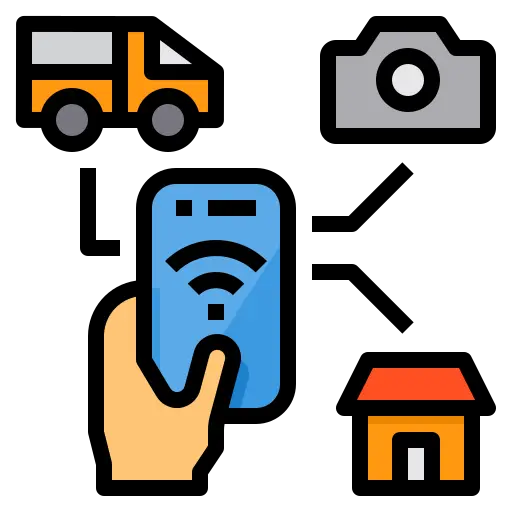
To address these challenges, it’s important to implement robust security measures at all levels of the IoT system, including devices, networks, and cloud-based systems. This can include measures such as encryption, secure authentication protocols, and access controls. In addition, it’s important to consider the ethical implications of the data being collected and used and to ensure that appropriate measures are in place to mitigate any potential biases or negative impacts.
In conclusion, the integration of AI into IoT systems presents numerous challenges and limitations that need to be carefully considered and addressed in order to realize the full potential of these technologies.
IoT and AI in Action: Case Studies from Various Industries
The intersection of IoT and AI has the potential to drive innovation and improve efficiencies in a wide range of industries and applications. Here are a few case studies or real-world examples of how the intersection of IoT and AI is being used in various industries:

- Healthcare: One example of the intersection of IoT and AI in healthcare is the use of IoT-connected devices to monitor patient vital signs remotely. These devices, such as wearable sensors and smart devices, can transmit data to healthcare professionals in real-time, allowing for early intervention in the event of any concerning changes. AI can also be used to analyze medical data to identify trends and potential issues, enabling early intervention and improving patient outcomes.
- Transportation: The intersection of IoT and AI is also being used to revolutionize the transportation industry. AI-powered IoT systems can be used to optimize routes and schedules, reducing fuel consumption and improving efficiency. In addition, the development of self-driving vehicles is being enabled by the integration of AI into IoT-connected sensors and systems.
- Agriculture: The intersection of IoT and AI can also be used to optimize the management of crops and livestock, improving yields and reducing waste. IoT sensors can be used to collect data on soil conditions, weather patterns, and crop growth, and AI algorithms can be used to analyze this data to optimize irrigation, fertilization, and pest control practices.
- Manufacturing: In the manufacturing industry, the intersection of IoT and AI is being used to enable predictive maintenance. IoT sensors can be used to collect data on the performance and condition of equipment, and AI algorithms can be used to analyze this data to predict when maintenance will be required. This can help prevent equipment failure and downtime, improving efficiency and productivity.
- Retail: In the retail industry, the intersection of IoT and AI is being used to optimize inventory management and improve customer experiences. IoT sensors can be used to track the movement of goods throughout the supply chain, and AI algorithms can be used to analyze this data to optimize inventory levels and reduce waste. In addition, AI-powered chatbots and virtual assistants can be used to provide personalized and interactive customer experiences.
- Energy: In the energy industry, the intersection of IoT and AI is being used to optimize energy consumption and improve the efficiency of power grids. IoT sensors can be used to collect data on energy usage and demand, and AI algorithms can be used to optimize energy distribution and reduce waste.
All things considered, the intersection of IoT and AI is being used in a wide range of industries and applications to drive innovation and improve efficiencies. As technology continues to evolve, it’s likely that we will see even more innovative uses of these technologies in the future.
AI and IoT Ethics: Bias and Accountability
As the intersection of IoT and AI continues to evolve, it’s important to consider the ethical implications of the technology. Some of the ethical considerations surrounding the use of AI in IoT include issues of bias and accountability.

One of the main concerns with the use of AI in IoT is the potential for bias to be introduced into the algorithms and decision-making processes. This can occur if the data used to train the algorithms is biased, or if the algorithms themselves are not designed to consider certain factors or groups of people. To address this issue, it’s important to ensure that the data used to train AI algorithms is representative and unbiased and to consider the ethical implications of the decisions being made by the algorithms.
Another ethical consideration surrounding the use of AI in IoT is accountability. As AI algorithms become more sophisticated and are used to make more complex decisions, it’s important to consider who is accountable for the actions taken by the algorithms. This is particularly important in scenarios where the actions taken by the algorithms may have significant consequences, such as in healthcare or transportation.
To sum up, the use of AI in IoT raises numerous ethical considerations that need to be carefully considered and addressed in order to ensure the responsible and ethical use of the technology.
Integrating AI into IoT: Approaches and Technologies
There are several different approaches and technologies being used to integrate AI into IoT systems. Here are a few examples:
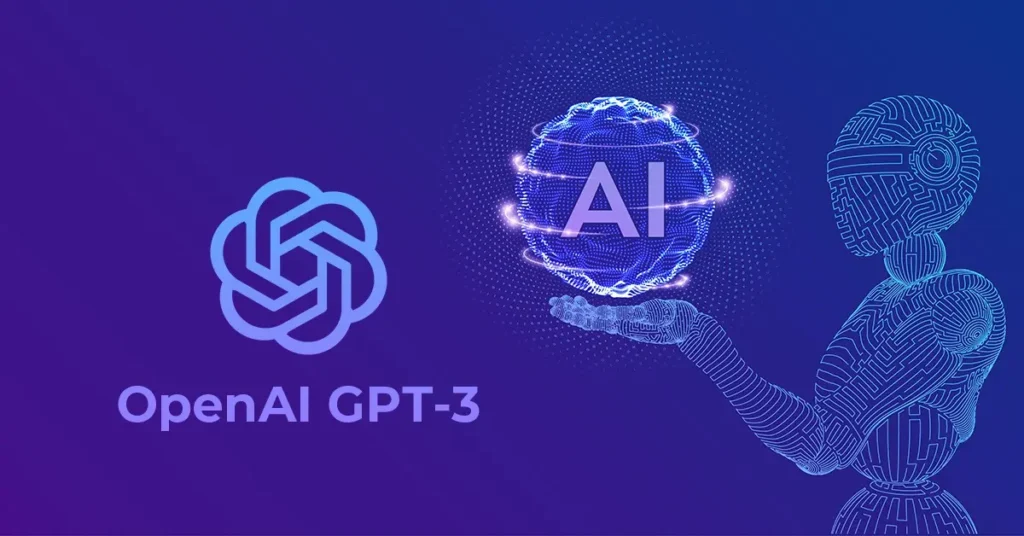
- Edge computing: Edge computing refers to the use of computing resources at the edge of a network, rather than in a central location such as a data center. By using edge computing, it’s possible to run AI algorithms on IoT devices and gateways, rather than transmitting the data to the cloud for processing. This can reduce latency and enable faster decision-making.
- Cloud-based solutions: Another approach to integrating AI into IoT systems is to use cloud-based solutions. In this approach, data from IoT devices is transmitted to the cloud, where it is processed by AI algorithms. This can be useful in scenarios where the processing power required to run the algorithms is too great for edge devices, or where the data needs to be shared with multiple parties.
- Hybrid solutions: It’s also possible to use a hybrid approach, combining edge computing with cloud-based solutions. In this approach, some AI algorithms are run on edge devices, while others are run in the cloud. This can be useful in scenarios where different levels of processing power are required, or where the data needs to be processed in different ways.
Overall, the approach and technology used to integrate AI into IoT systems will depend on the specific requirements of the application and the available resources. By considering the trade-offs between edge computing and cloud-based solutions, it’s possible to choose the best approach for a given application.
IoT and AI: Societal and Economic Impacts
The intersection of IoT and AI has the potential to have significant societal and economic impacts. One potential impact is the displacement of certain jobs as AI and automation become more prevalent in various industries. For example, the use of self-driving vehicles and AI-powered equipment in transportation and manufacturing could lead to the displacement of certain jobs.
However, the intersection of IoT and AI also has the potential to create new employment opportunities. As the technology evolves and becomes more widely adopted, there will likely be a need for professionals with skills in areas such as data science, AI programming, and IoT engineering. In addition, the development and deployment of IoT and AI systems will likely require the involvement of a wide range of professionals, including project managers, business analysts, and IT professionals.
Overall, the societal and economic impacts of the intersection of IoT and AI are likely to be complex and multifaceted. While there may be some job displacement, it’s also likely that the technology will create new employment opportunities and drive economic growth in various industries.
Conclusion
In conclusion, the intersection of IoT and AI has the potential to drive significant innovation and efficiencies in various industries and applications. We’ve discussed how AI is being integrated into IoT devices and systems and explored the potential benefits of using AI in conjunction with IoT. We’ve also examined the challenges and limitations of integrating AI into IoT systems, and discussed the ethical considerations surrounding the use of AI in IoT.
We’ve also looked at the different approaches and technologies being used to integrate AI into IoT systems, and explored the potential societal and economic impacts of the intersection of these technologies. Some of the key points that we’ve covered include:
- The potential impact of the intersection of IoT and AI on various industries and applications, such as healthcare, transportation, and agriculture.
- The benefits of using AI in IoT applications, such as real-time data analysis and decision-making capabilities.
- The challenges and limitations of integrating AI into IoT systems, including issues of data privacy and security, and the need to address ethical considerations.
- The different approaches and technologies being used to integrate AI into IoT systems, such as edge computing and cloud-based solutions.
- The potential societal and economic impacts of the intersection of IoT and AI, include job displacement and the creation of new employment opportunities.
Overall, the intersection of IoT and AI is a rapidly evolving area with the potential to drive significant innovation and efficiencies in various industries and applications. As technology continues to evolve, it will be interesting to see the impact that it has on various sectors and the ways in which it is used to improve our lives and drive economic growth.
FAQ
What is the Internet of Things (IoT)?
The Internet of Things (IoT) refers to the growing network of physical devices, such as appliances, vehicles, and industrial equipment, that are connected to the internet and able to collect and exchange data.
What is artificial intelligence (AI)?
Artificial intelligence (AI) refers to the ability of computer systems to perform tasks that would normally require human intelligence, such as learning, problem-solving, and decision-making.
How is AI being integrated into IoT devices and systems?
AI is being integrated into IoT devices and systems in various ways. For example, AI algorithms can be used to analyze data collected by IoT sensors to make predictions, optimize processes, and automate tasks. In addition, AI can be used to power virtual assistants and chatbots that can interact with users through IoT devices.
What are the benefits of using AI in conjunction with IoT?
There are several benefits of using AI in conjunction with IoT. For example, AI can be used to analyze real-time data collected by IoT sensors to make better decisions, optimize processes, and improve efficiency. In addition, AI can be used to automate tasks, reducing the need for human intervention.
What are the challenges and limitations of integrating AI into IoT systems?
Some of the challenges and limitations of integrating AI into IoT systems include issues of data privacy and security, the need to ensure that AI algorithms are robust and unbiased, and the need to address ethical considerations.
What are the ethical considerations surrounding the use of AI in IoT?
Some of the ethical considerations surrounding the use of AI in IoT include issues of bias and accountability. It’s important to ensure that AI algorithms are designed to be unbiased and to consider the ethical implications of the decisions made by the algorithms.
What are the different approaches and technologies being used to integrate AI into IoT systems?
There are several approaches and technologies being used to integrate AI into IoT systems, including edge computing, cloud-based solutions, and hybrid approaches that combine edge computing with cloud-based solutions.
What are the potential societal and economic impacts of the intersection of IoT and AI?
The intersection of IoT and AI has the potential to have significant societal and economic impacts, including job displacement and the creation of new employment opportunities.
How are various industries being impacted by the intersection of IoT and AI?
The intersection of IoT and AI is having an impact on a wide range of industries, including manufacturing, retail, energy, and healthcare.




